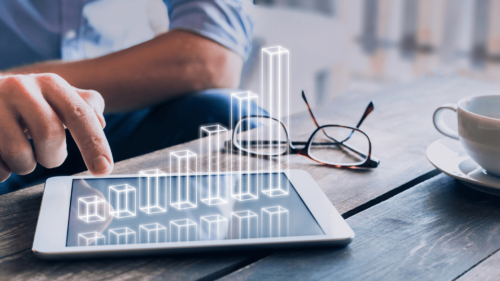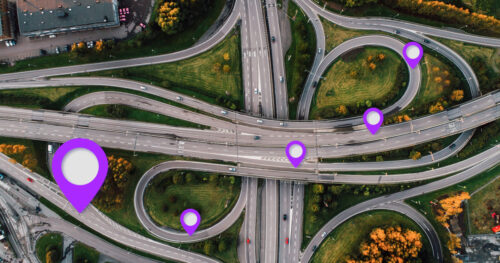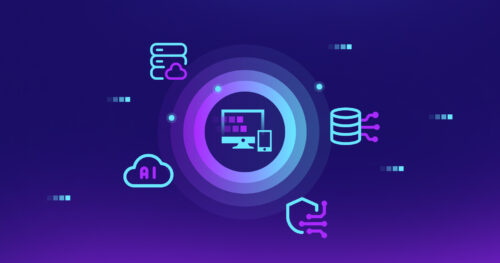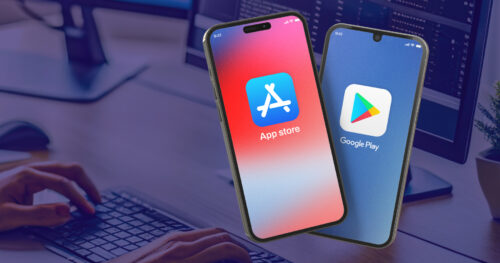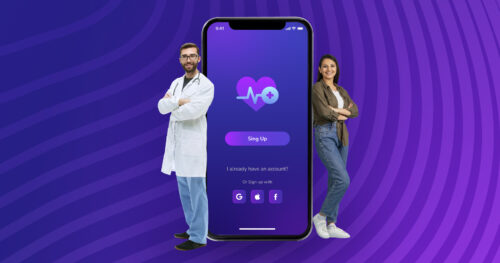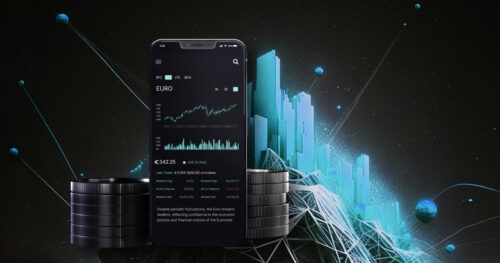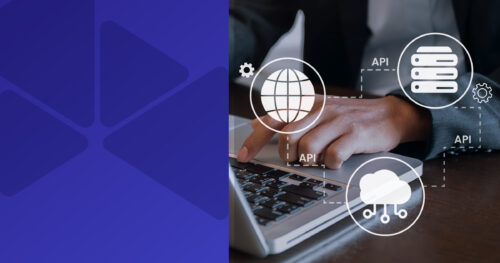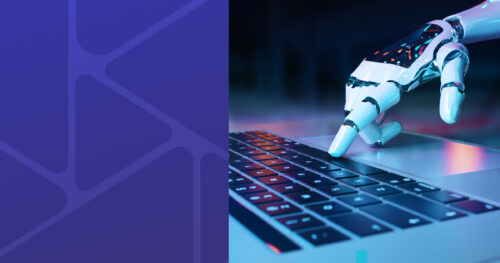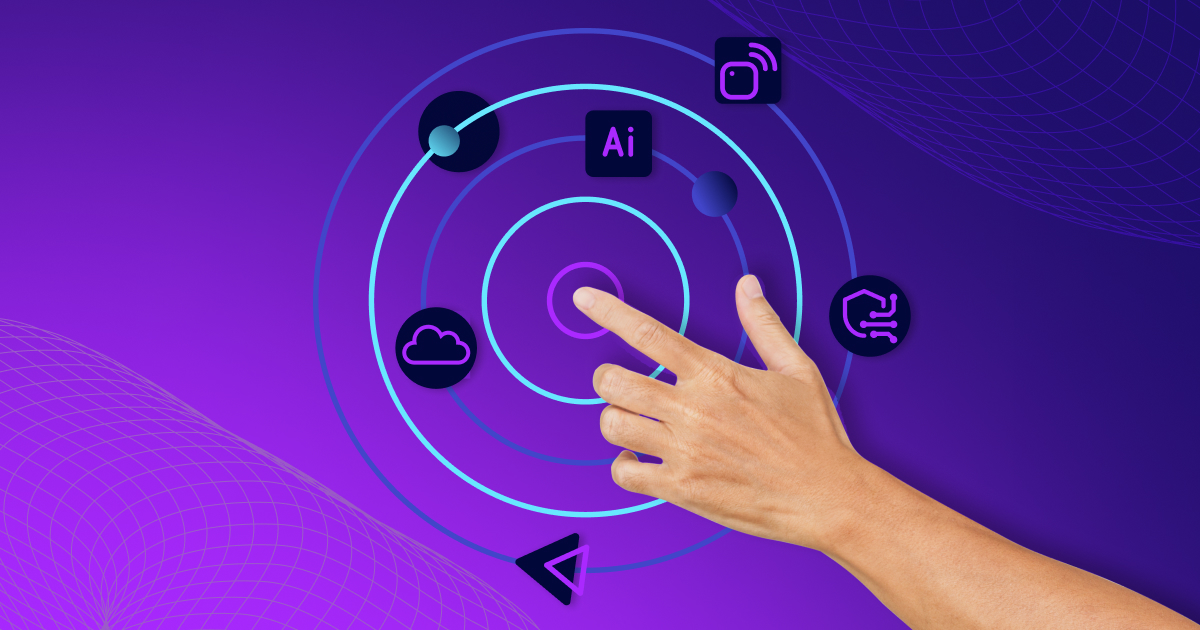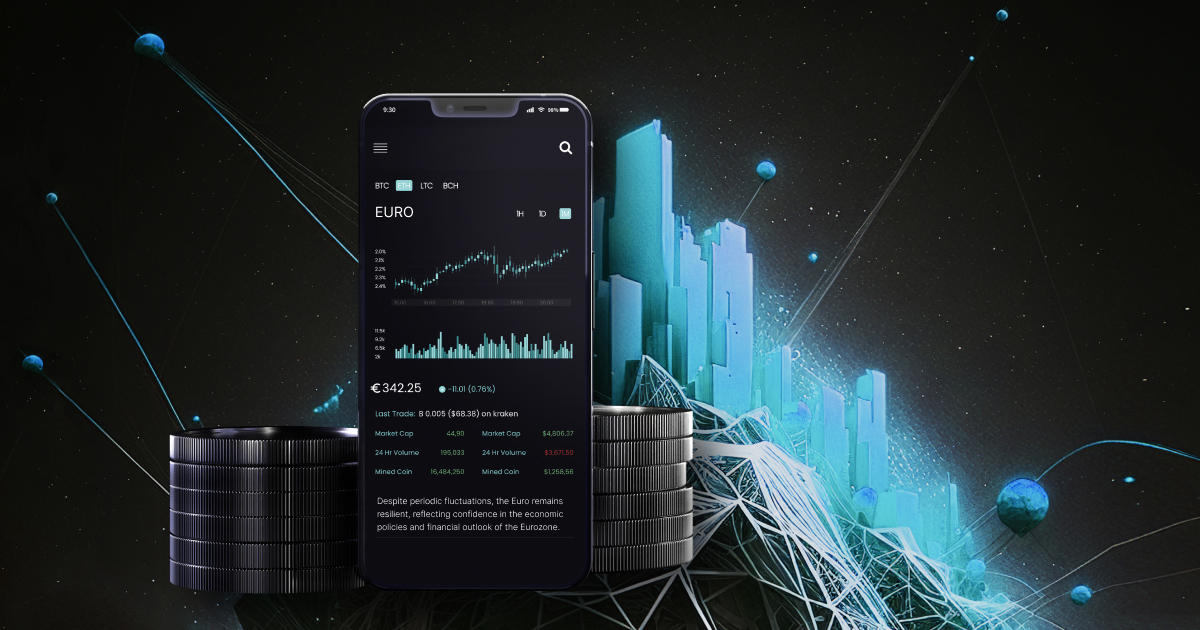The technology landscape is constantly evolving, transforming business, society and the environment. The main efforts of technology leaders today are aimed at automation, security, resilience, faster time to market, sustainability, connectivity and personalization, while dealing with the constant challenges of new industry standards, regulations and high customer expectations. DigitalMara, an IT company with full stack development services, has put together this report highlighting the key tech trends for 2024 and exploring the opportunities, challenges, and transformative potential of custom software development.
The report covers the following trends:
- Data,
- Generative AI,
- Smart devices,
- Sustainable technologies,
- Cloud,
- Cybersecurity, and
- Customer-centric approach.
Datafication
Almost all aspects of business, society and our personal lives are being turned into quantifiable data. That’s what datafication means. The process involves collecting, analyzing and using data to derive insights, make informed decisions, optimize and automate processes, and create new devices and software products. With the growing use of various IoT devices, there may be a trend toward processing data at the edge, closer to where it is generated. Edge computing solutions can reduce latency and improve the efficiency of real-time data processing.
The total amount of data created, captured, copied, and consumed globally is forecast to reach 147 zettabytes in 2024. (Statista)
Data-driven decision-making is in high demand across all industries. Various analytics and business intelligence tools help to extract actionable insights from data. The integration of Artificial Intelligence (AI) and Machine Learning (ML) technologies makes it possible to analyze larger data sets, to make the analysis more accurate and in-depth, and then generate predictions. AI also can be used for augmented analytics, automating repetitive tasks like data preparation, providing advanced analysis capabilities, and simplifying the overall analytics workflow. Users can interact with data using natural language queries and receive insights in a human-readable format.
We all want our data to be stored securely and safely. Increasing concerns about data privacy require the introduction of more robust data governance practices. Companies have to ensure ethical and responsible use of data, complying with regulations such as GDPR and building trust with users.
Generative AI
Gartner defines the current period as the age of Artificial Intelligence, as all innovations are somehow connected with this technology. There is some truth to this. AI can complement existing activities and create new ones. Users just want to be sure they can utilize it safely for both business and personal needs.
Intelligent applications
Experts predict integration of GenAI into various types of enterprise software, including productivity software suites, database and analysis, enterprise resource planning, customer relationship management, document management, engineering, design, and software development tools. Intelligent applications can recommend and automate actions instead of just providing analysis. They can offer better personalization, more efficient use of resources, improved accuracy, increased automation, more fine-grained response and decision support.
It’s expected that, by 2026, GenAI will significantly alter 70% of the design and development effort for new web applications and mobile apps. (Gartner)
Nearly all enterprise software companies will integrate GenAI in at least some of their offerings by the end of 2024, which could boost revenue by $10 billion. (Deloitte)
Shift to private data
Enterprises are shifting their approach for training GenAI models, choosing their own proprietary and domain-specific data instead of using public data. Such an approach makes it possible not only to enhance productivity, optimize costs, and unlock complex insights, but also to mitigate and avoid risks associated with public data sets, and prevent copyright and usage issues.
When developing your own model, it’s necessary to understand how large it should be and how much data is needed to train it effectively. Enterprises may have diverse data sets of different quality and forms. All that information needs to be reformatted, conditioned, labeled and brought together into a single database, but there are potential pitfalls in doing so. Training sets, to be more domain-specific, can narrow the range of responses, while the novelty and creativity of a model can degrade over time. Therefore, it’s necessary to keep data sets updated and improve the model to get accurate and trustworthy outputs.
In 2024, enterprise spending on GenAI will grow by 30%, from an estimated $16 billion in 2023. (Deloitte)
Regulations
There are still no clear regulations for GenAI; questions remain about how to manage issues of individual consent, rectification, erasure, bias mitigation, and copyright usage. In 2024, this issue may be partly resolved with two regulations coming from the EU. These are the well-known GDPR and the upcoming AI Act (AIA). AIA sets consistent standards for AI systems, including categories of AI applications sorted by risk level, prohibited activities, data governance, principles of human oversight, penalties for non-compliance and much more. GDPR is expected to regulate GenAI with regard to processing of personal data. Clear regulation enables enterprises and vendors to proceed with certainty and to continue to evolve productively.
Smart devices
Smart devices have been with us for a long time, but new technologies allow for improvements and expanded functionality. The main aspects of development are robust security measures, connectivity, better customer experience, data processing, smart ecosystems and new devices:
- 5G technology’s impact on connectivity and faster data transfer is significant. It allows smart devices to be more responsive and efficient.
- With AI and ML technologies, smart devices are able to learn user preferences and behavior, becoming more adaptive and providing personalized experiences.
- Using edge computing to process data closer to the source reduces latency and improves the real-time capabilities of smart devices.
- Development of smart prosthetics, exoskeletons, or other devices aimed at enhancing physical or cognitive abilities.
- Growth of comprehensive smart home ecosystems, where various devices are seamlessly integrated and interact with each other, including interoperability between different brands. Cross-platform development helps to create multi-systems between different devices, so that users can easily manage their smart homes from any device in hand, including a smart watch, desktop, tablet and mobile applications on iOS or Android.
- The integration of AR and VR can create immersive experiences for applications such as gaming, education and training.
The number of connected IoT devices worldwide is forecast to reach 17.8 billion in 2024. (Statista)
Sustainable technologies
We are looking for ways to continue to grow and thrive, minimizing the damage we do to the environment and perhaps even reversing some of the damage done in the past. And technology can help us with that. The rise of green tech, renewable energy solutions, and eco-conscious design are reshaping the landscape. Companies are not only expected to comply with environmental regulations but to go beyond, adopting eco-friendly practices that contribute to a healthier planet. Green software development, energy-efficient data centers, and the promotion of digital inclusivity are gaining traction.
For example, Deloitte reports that, despite accounting for only 2% of global emissions, telecom companies are moving from copper to fiber, have shut down 3G networks, and are deploying efficient 5G networks. Semiconductor companies will likely use less water and power per chip, thanks in part to new energy-efficient labs.
ESG reporting
ESG stands for Environment, Social and Governance metrics that enterprises have to measure and report. Reporting these metrics is not new; companies have been highlighting their commitment to reducing carbon emissions and achieving sustainability goals for a long time. However, the problem here is the different methods of calculating emissions and accounting, which means the results gained are not consistent and accurate.
Special ESG tracking software can make things transparent and unified. It takes company data, indexes, and estimate tables and calculates carbon emissions, greenhouse gas emissions, ethics and corruption levels, and other social and environmental impacts. AI here can also improve software functionality. An ESG solution must be configurable to a company´s size and industry, provide connections to server systems and automatic data collection from multiple data sources, conform to CSRD (the EU’s Corporate Sustainability Reporting Directive), SEC (the U.S. Securities and Exchange Commission), and other regulatory and voluntary frameworks, and enable customizable reports that may be integrated to reflect business goals and processes.
Green data centers
Green data centers are designed with a focus on minimizing environmental impact, including reduction of carbon footprint and less energy consumption. The goal is to support a more sustainable approach to data processing and storage using energy-efficient servers, advanced cooling systems, and power distribution. Their key features are:
- Integration with renewable energy sources such as solar, wind, or hydropower.
- Cooling technologies, such as liquid cooling or outside air cooling, to optimize temperature management and reduce energy consumption.
- Multiple virtual servers that can run on a single physical server, optimizing resource utilization.
- Waste heat generated during operations may be used for heating nearby buildings or for other industrial processes.
- The design of the physical infrastructure of the data center is optimized for energy efficiency and effective airflow management.
- Outdated equipment and technical components are properly disposed of, to minimize environmental impact.
- Advanced monitoring and management systems track energy usage, temperature, and other environmental factors in real-time.
IoT for environmental monitoring
Internet of Things technology can make a significant contribution to environmental sustainability. IoT-enabled monitoring is a successful way to collect data, gain insights and make informed decisions to safeguard our environment. Smart sensors and devices are being deployed to monitor air, soil and water quality, track energy consumption, and optimize resource utilization. Monitoring is carried out in real time, enabling us to obtain accurate and up-to-date data. Sensors can be set up literally everywhere — in the water, soil, air, environment, buildings and industrial facilities — and can track temperature, moisture, pollutants, movements and many other parameters.
IoT serves both natural ecosystems and urban environments. In addition to monitoring and management systems, it can be used in early warning systems for natural disasters, from monitoring seismic activity to tracking weather conditions. This provides timely alerts, helping communities prepare for and respond to natural disasters more effectively.
AgTech
Agricultural production is under pressure from climate warming, geopolitical tensions, water and energy shortages, rising fertilizer prices and inefficient methods. AgTech has potential to resolve both food security and environmental sustainability. Technologies can help improve crop yields, use equipment and livestock more efficiently, plan harvests better, and adopt sustainable agrifood-production methods. Some examples are AI-based cultivation methods, farm and livestock data management platforms, satellite, broadband, and IoT-enabled smart farming and vertical farming.
The overall AgTech revenue opportunity, including IoT end points and connectivity devices, will be $18 billion globally in 2024. (Deloitte)
Cloud
Industry cloud platforms (ICPs)
ICP is already a well-known technology, but still not widely used. Industry cloud is a combination of traditional cloud categories — software (SaaS), platform (PaaS) and infrastructure (IaaS) — tailored to the needs of a particular industry. They offer the full set of industry-relevant capabilities, enabling enterprises to rapidly develop, adapt and support their processes and applications. Enterprises can create scalable software solutions for their internal use and their customers. Experts predict more widespread use of industry clouds in coming years.
Localized cloud solutions
Cloud computing is based on the idea that data location doesn’t matter. However, as the volume, value and sensitivity of data have increased, a new attitude to cloud governance has evolved. According to the “cloud sovereignty” principle, data stored in the cloud should obey the laws of the country of its physical residence. It’s important to consider factors such as tensions between companies and nations regarding personal data, geopolitics, various types of cloud structures, data protection and cybersecurity issues.
Examples of localized cloud solutions are government clouds and distributed clouds. The first is a specialized cloud computing environment tailored to meet the strict regulatory and compliance needs of governmental agencies. That’s why the role of DevOps with strong knowledge of continuous integration and continuous deployment (CI/CD) has increased significantly. The second term refers to the distribution of public cloud services to different physical locations, while the operation, governance, updates, and evolution remain the responsibility of the originating public cloud provider.
Government cloud is forecast to surpass $41 billion in 2024, while distributed cloud is forecast to grow to a $7 billion market. (Deloitte)
It’s important to pay attention to the fact that data localization laws may create operational complexity for global businesses. Regulations tend to change, as countries care about national security, data protection and the impact of new technologies. Companies should be agile enough to adapt to these changes, as compliance today is essential.
Cybersecurity
Modernization and optimization are the main cyber investment priorities for 2024, while cloud security is the number one cyber risk concern. (PWC survey) Companies should control each aspect: identity and access, email accounts, website portals, applications, proprietary information, customer interactions, operating systems, connected devices and so on.
Digital Trust
Digital trust is about the confidence of users in the security, confidentiality and reliability of digital systems and services. Security is crucial; thus, advanced encryption, decentralized identity systems, and tools that give individuals more control over their personal data are still the priority. AI and ML technologies can empower security measures providing advanced threat detection and response capabilities. They help in analyzing vast amounts of data to identify patterns and anomalies indicative of potential security threats. The customer-centric approach also penetrates cybersecurity advancements. Security measures that are user-friendly and do not hinder the user experience are gaining more popularity, for example, biometrics and easier transfer of sessions between devices.
Platforms are developing their large-language models in combination with their cyber tech solutions. Microsoft Security Copilot intends to provide GenAI features for security posture management, incident response and security reporting. Google has announced its Security AI Workbench for similar use cases. (PWC survey)
Continuous threat exposure management
The existing approach to enterprise cybersecurity threat management concentrates on addressing specific events. However, this may not be the most effective long-term solution. Experts propose to use continuous threat exposure management programs that pinpoint and prioritize whatever can threaten the company. The first step is to define all vulnerable entry points and assets, including all devices and applications, corporate social media accounts, online code repositories and integrated supply chain systems. The next step is to identify visible and hidden assets, vulnerabilities, misconfiguration and other risks. It’s important to accurately scope based on business risk and potential impact.
Prioritization should consider urgency, security, availability of compensating controls, tolerance for residual attack points, and level of risk posed to the organization. It’s necessary to consider how attacks might work and how systems might react. The Zero Trust security model assumes that threats can come from both inside and outside an organization. There should be continuous verification and authentication of users and devices, even those on the corporate network.
By 2026, organizations that prioritize their security investments based on a continuous exposure management program will be 3x less likely to suffer a breach. (Gartner)
Customer-centric approach
A customer-centric approach is already a consistent trend, and companies are continuously looking for ways of delivering exceptional experiences to their customers. Using cross-platform development, they create applications that can run on multiple operating systems and devices. Meanwhile, it should be pointed out that monolith products are giving way to solutions deploying microservices architecture, which give more opportunities for scalability and integration. Accompanied by an omnichannel strategy, these advancements provide a seamless experience across various channels. In addition, customers prefer real-time engagement, and technologies like chatbots, live chat, and instant messaging can provide immediate assistance and support.
AI and ML algorithms can be used for data collecting and processing to tailor products, services, and communication to individual customer preferences. Moreover, predictive analytics stimulate the growth of proactive customer service, which means anticipating customer needs and addressing issues before they become problems, as well as Increasing emphasis on Voice of the Customer analytics to gather and analyze feedback from various touchpoints. Such a data-driven approach can help companies to understand customer sentiments, preferences, and pain points.
Final words
The technological landscape is constantly changing; new solutions are emerging. And enterprises should decide how they can benefit from innovations and how to implement them. Technology adoption depends on the business’s goals and current starting position and involves creating infrastructure, governance and tools that organizations, employees and customers need. It’s a continuous, multi-stage process that requires fulfillment of a wide range of tasks, and a team with certain skills and budget. And here two main questions arise: how to build a team and how to get the desired result without inflating the budget.
Enterprises need to be agile and enough to transform and implement new solutions quickly. The internal team can’t always handle the task alone, but a proper team needs to be assembled before anything else can happen, which may not be easy. That’s why many companies prefer to turn to external consulting and custom software development. Outsourcing is a cost-effective way to implement digital strategies, support scaling, manage changing needs and ensure timely adjustment and resilience.
At DigitalMara we always study current tech trends and help our clients to choose appropriate solutions. We consider trends in automation, security, cloud, data and connectivity in custom software development. Our specialists are aware of new technologies, tools and approaches and can perfectly augment your internal team. We offer full stack development, including consulting and business analysis, UI & UX design, development and API integration, DevOps, testing and QA, post development support and maintenance.
DigitalMara works with medium businesses and enterprises, and both long-term and short-term projects across various industries, such as logistics, hospitality, telecommunication, healthcare, e-commerce and others. Developed software solutions are robust, scalable and user-friendly and seamlessly operate on various platforms and devices. Building apps from scratch, adding new features to your existing system, and modernizing your legacy software – we can do it all.







